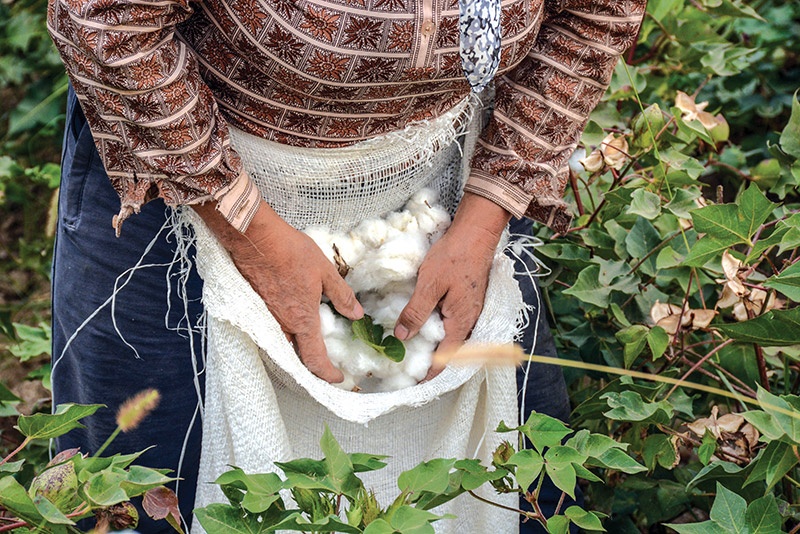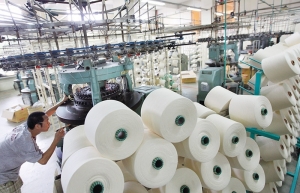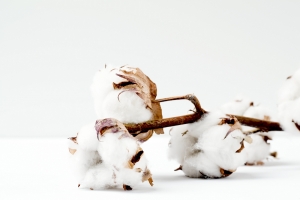Demand for cotton forces adjustments
Thanh Cong Textile Garment Investment Trading JSC exported over one-third of its products to the United States in 2021. However, the company started to face challenges following the US’ blanket ban on all Xinjiang cotton. Last year, President Joe Biden signed into law the Uyghur Forced Labor Prevention Act.
 |
| Vietnam’s cotton imports reach up to one million tonnes each year, Photo: Shutterstock |
Tran Nhu Tung, chairman of the company, said that the company has adopted regulations this year related to this act. Accordingly, buyers have to be responsible for export orders to the US which source Chinese cotton materials.
Thanh Cong secures many large orders from the US. In 2022, the company sets a target to generate $179 million in revenues and $10.87 million in profit, up 120 per cent and 188 per cent respectively against last year.
Tung noted that yarn exports are the main driving force for Thanh Cong. “There is a rapidly growing demand for yarn imports in the global market amidst a shortage of supply from China. However, the rising pressure of input material costs is dampening the profit prospect of this business segment,” Tung said.
Cotton yarn is the main raw material to make cotton fabric, the most used fabric in the world today. The material plays an important role in the supporting industry for textiles and garments.
Vietnam’s yarn industry has enjoyed a year of benefiting from high prices in the global market. According to several analysts, production improved when yarn selling prices increased faster than cotton raw material prices.
Yarn prices have been on an upward trend since 2020, while the demand for textiles and garments continues to be at a high level as the yarn supply from China is shrinking and Brent oil price spikes to a 7-year high, thereby putting upward pressure on recycled yarn prices. In 2021, the price of exported yarn increased by about 25 per cent compared to 2020, according to data by the General Department of Vietnam Customs (GDVC).
The cotton demand has been increasing in Vietnam over the past few years, fuelled by the growing scale of the country’s yarn production following the operation of large-scale projects, including Texhong Group, with an annual output of 450,000 tonnes in the northeastern province of Quang Ninh and a new factory by Century Synthetic Fiber Corporation.
According to the Vietnam Cotton and Spinning Association (VCOSA), Vietnam’s cotton imports are more than one million tonnes per year with only 2 per cent of cotton being locally sourced. In 2021, Vietnam spent $3.23 billion importing cotton, up 41.6 per cent against 2020, according to the GDVC.
Truong Van Cam, vice chairman of the Vietnam Textile and Apparel Association, said that Vietnam’s spinning industry depends on imported cotton materials, accounting for 98 per cent of the total amount of cotton being used. Data from the association shows that Vietnam’s cotton imports have increased sharply in the past decade, from 150,000 tonnes in 2005 to about 1.2 million tonnes in 2016 and 1.6 million tonnes in 2019. This figure stands at 1.6 million tonnes by 2021.
Vietnam’s cotton area and production have decreased over the years, with the decline in Vietnam’s cotton yield attributable to high production costs and lack of development policies. According to Vietnam Textile and Garment Group, Vietnam was home to 76,000 hectares of cotton planting areas in 2020, including about 32,000ha in the Central Highlands provinces, 27,000ha in the south-central coast, 12,000ha in the central region, and over 2,000ha in the north.
Nguyen An Toan, chairman of the VCOSA, said that cotton prices will continue their upward trend despite volatile demand. The cotton market is not immune to macro-economic challenges including rising inflation, the shipping crisis, supply chain disruptions, and China’s pandemic approach, as well as the withdrawal of economic support by the US and other economies.
The VCOSA forecast that the price of cotton imported into Vietnam continued to increase in the first half of 2022, and is currently being adjusted in the second half. Toan raised his concerns about the possibility of supply chain disruptions. “Growing tensions and sanctions not only cause cotton price hikes but also affect the cotton planting areas. Currently, cotton prices are higher and more attractive than they were in the previous period,” Toan said. “However, the advantage of cotton will be lessened due to the increase in prices of other agricultural products. As a result, cotton planting areas are unlikely to increase as previously forecast.”
According to the report by the US Department of Agriculture (USDA) in May, the cotton yarn industry will reach a balance point in 2022. World cotton production in 2022/23 is forecast at 26.36 million tonnes, up 2.2 per cent compared with the 2021/2022 season that ended in July. Cotton consumption is forecast to reach 26.6 million tonnes, a slight decline of 2.2 per cent. The USDA noted that the increasing cotton production by China and India is the main reason for the balance. Production in India is predicted to grow strongly by 7.9 per cent to reach 5.99 million tonnes of cotton. The figure is equal to that of China, which accounts for 23.2 per cent of world cotton production.
Meanwhile, US cotton production in 2022/23 is forecast to be lower than last season as significant drought conditions are present in the southwest.
 | US ratchets up origin-tracing on cotton materials Amidst the changing geo-political landscape, the traceability of cotton materials has become a top concern for textile exporters. |
 | Cotton yarn and product exports drive record cotton consumption in Vietnam Robust growth in Vietnam’s cotton yarn and product exports is projected to drive 2020-2021 cotton consumption to a record 7.3 million bales, 700,000 higher than the previous year’s downfall from COVID-19, according to the weekly report by the US Department of Agriculture (USDA). |
 | Facilitating recovery of Vietnam’s yarn sector in midst of US policy enforcement The Vietnam Textile and Apparel Association has held a meeting with the US partners to discuss the enforcement of the Uyghur Forced Labor Prevention Act. Association chairman Vu Duc Giang shared with VIR’s Ky Anh the impact of the act on Vietnam’s garment exports to the United States. |
What the stars mean:
★ Poor ★ ★ Promising ★★★ Good ★★★★ Very good ★★★★★ Exceptional
Related Contents
Latest News
More News
- Businesses ramp up production as year-end orders surge (December 30, 2025 | 10:05)
- Vietjet chairwoman awarded Labour Hero title (December 29, 2025 | 13:06)
- How to unlock ESG value through green innovation (December 29, 2025 | 10:03)
- AI reshapes media and advertising industry (December 29, 2025 | 08:33)
- FPT and GELEX sign deal to develop blockchain tech for global markets (December 29, 2025 | 08:29)
- Vietnam’s GDP forecast to grow by 9 per cent in 2026 (December 29, 2025 | 08:29)
- Women entrepreneurs are key to Vietnam’s economic growth (December 29, 2025 | 08:00)
- Vietnam's top 500 value-creating enterprises announced (December 27, 2025 | 08:00)
- The PAN Group shaping a better future with ESG strategy (December 26, 2025 | 09:00)
- Masan Consumer officially lists on HSX, marking the next phase of value creation (December 25, 2025 | 13:20)

 Tag:
Tag:



















 Mobile Version
Mobile Version